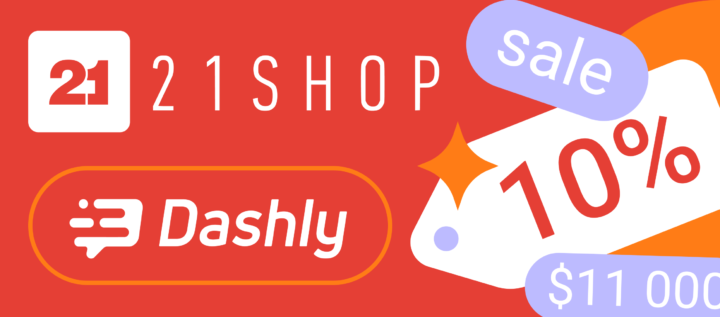Inbound sales vs outbound sales: Understanding the difference to build an effective strategy for your Business

Overview
Navigating the world of sales can feel overwhelming for many business owners. You might find yourself grappling with the decision between inbound and outbound sales, each presenting its own set of challenges and rewards. It’s crucial to understand that both approaches have unique advantages that can significantly impact your business.
Inbound sales often yield a higher return on investment, attracting quality leads through genuine customer engagement. This method allows you to build relationships and foster trust, which can lead to long-term success. On the other hand, outbound sales can deliver quicker results, but they may sometimes come across as intrusive, leaving potential customers feeling pressured.
So, what’s the best path forward? A hybrid approach could be the most effective strategy, blending the strengths of both inbound and outbound sales. By acknowledging the unique benefits and challenges of each, you can create a sales strategy that feels both practical and tailored to your business needs. Remember, you’re not alone in this journey — many have faced the same crossroads and found success by adapting their strategies thoughtfully.
Introduction
In the ever-evolving landscape of sales, we understand that businesses face a critical challenge: choosing between inbound and outbound strategies. Each has its unique strengths and weaknesses, and it can feel overwhelming. Inbound sales focus on a customer-centric approach, using engaging content and social media to attract high-quality leads. On the other hand, outbound sales take a proactive stance through direct outreach efforts.
As you navigate these two methodologies, it’s essential to understand their distinct characteristics. This understanding can help optimize your marketing strategies and maximize your return on investment. With technology advancing and consumer behaviors shifting, this article explores the nuances of inbound and outbound sales. We’ll delve into effective tactics, how to integrate both approaches, and the role technology plays in enhancing customer engagement and driving sales success.
You’re not alone in this journey. Let’s explore these strategies together and find what works best for you.
Defining inbound and outbound sales: Key concepts
Inbound transactions embody a customer-focused approach, where potential clients take the initiative to reach out to a business — often through engaging content, social media interactions, or referrals. This strategy emphasizes attracting high-quality leads by delivering valuable information tailored to address client needs and pain points, utilizing tactics like SEO and content marketing. In contrast, external sales involve proactive outreach efforts, including cold calling, email outreach, and direct mail campaigns.
This method often carries an aggressive stance, aiming to generate leads through direct contact rather than waiting for customers to express interest. With the increasing emphasis on inbound marketing, 53% of marketers report achieving a higher return on investment (ROI) through these approaches compared to just 16% who found outbound methods effective. Additionally, businesses using CRM software can experience up to a 29% rise in revenue, underscoring the importance of efficient lead management and nurturing in inbound strategies.
As the commercial landscape evolves in 2025, understanding the differences between inbound and outbound sales becomes crucial for crafting effective marketing plans. While traditional outbound methods like door-to-door marketing may seem outdated, they still showcase resilience and effectiveness in generating leads, highlighting the value of proactive outreach.
You’re not alone in navigating these complexities — embracing both strategies can empower your business to thrive in an ever-changing environment.
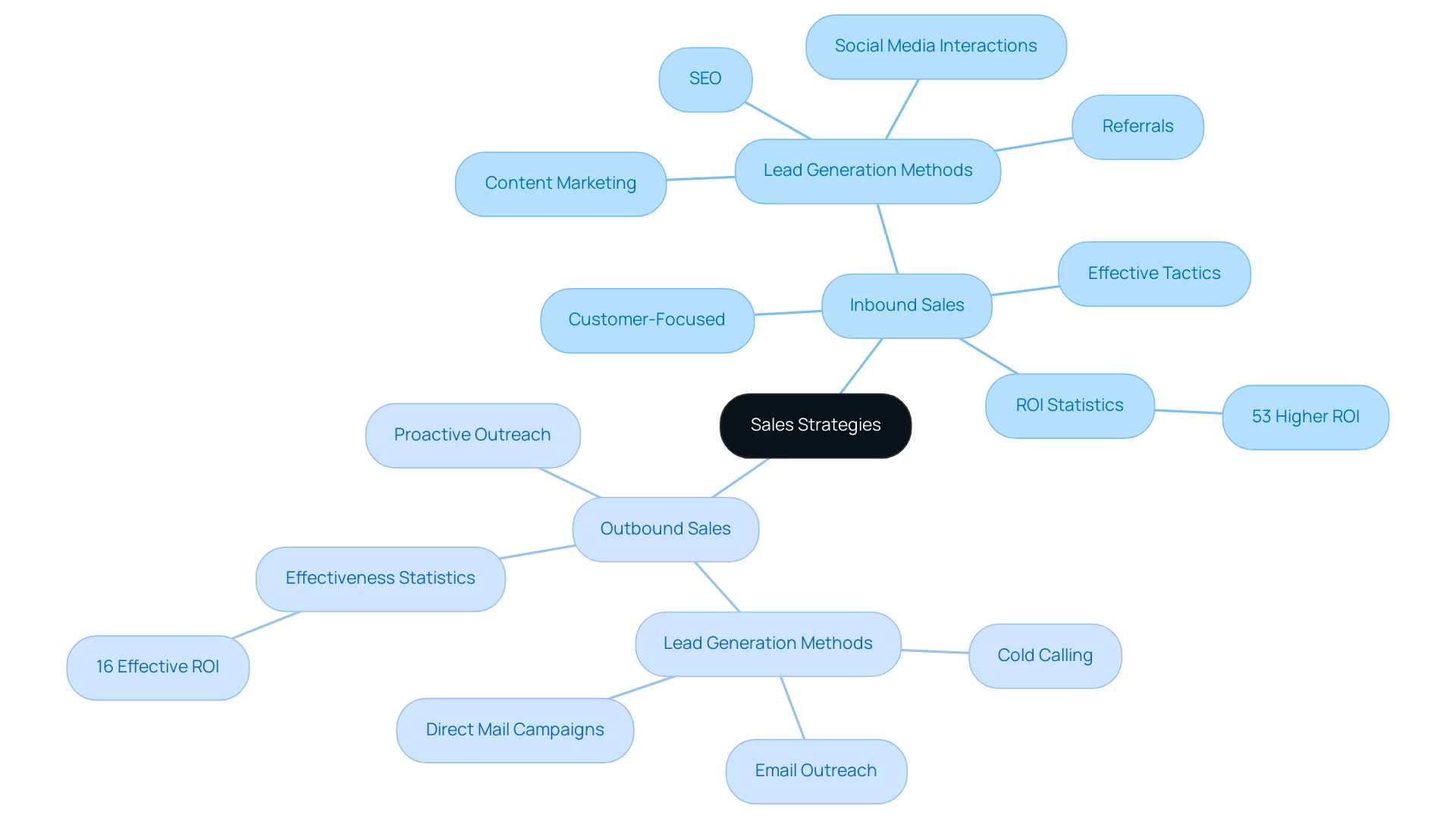
Pros and cons of inbound and outbound sales strategies
When considering inbound sales versus outbound sales, it’s important to recognize the unique challenges that many small business owners face. Inbound sales approaches are often praised for their cost-effectiveness; they typically require less upfront investment and can lead to higher-quality leads over time. However, these strategies do demand ongoing content creation and may take longer to yield tangible results. Patience is essential for success here. In fact, the average new hire becomes fully productive in about 5.3 months, underscoring the need for effective training and onboarding processes to truly maximize the potential of inbound strategies.
On the flip side, outbound sales strategies can deliver quicker results, giving companies more control over the transaction process. Yet, it’s crucial to be aware that these external tactics often come with higher costs per lead and can sometimes feel intrusive, potentially harming your brand’s reputation. For example, Gong highlights that revenue leaders who encourage their reps to start cold calls with a friendly ‘How’ve you been? ’ see success rates jump by 6.6%. This illustrates the importance of effective opening techniques in outbound marketing.
As you weigh your options in the inbound sales versus outbound sales debate, it’s vital to carefully assess your resources and the dynamics of your target market. Additionally, ongoing training plays a significant role in enhancing performance. This reinforces the need for organized training initiatives to support your sales personnel effectively.
Looking ahead, with the global direct-to-door market projected to grow at a rate of 6.4% annually until 2030, understanding these dynamics is essential for refining your revenue strategies for 2025. You’re not alone in navigating these complexities; with the right approach, you can enhance your sales efforts and achieve your business goals.

Effective tactics for inbound sales success
To thrive in inbound marketing, it’s essential for businesses to create high-quality content that genuinely addresses the pain points of their target audience. We understand that navigating this landscape can be daunting. As Samantha Stallard points out, 53% of marketers find that inbound marketing generates a higher ROI compared to just 16% for outbound approaches. This insight highlights the importance of focusing on strategies that resonate with potential customers.
Implementing robust SEO practices not only boosts visibility but also drives organic traffic — making it a cornerstone of effective inbound marketing efforts, especially as we look towards 2026. By prioritizing these methods, you can simplify your marketing journey and connect with your audience more effectively.
Incorporating social media marketing into your strategy is another powerful way to reach your audience. Did you know that 56% of professionals use these platforms to find new prospects? By leveraging social media, you can engage with potential clients where they already spend their time. Additionally, lead nurturing initiatives, especially through email marketing, help guide prospective clients effortlessly through the purchase process. Tools like Dashly’s chatbots enable immediate engagement, capturing leads at critical moments and ensuring they are directed appropriately based on their needs.
Moreover, Dashly’s automation capabilities allow businesses to focus on growth while maintaining high levels of customer engagement. Personalization is a crucial tactic; by tailoring content and communications to align with individual preferences, you can significantly enhance conversion rates. It’s interesting to note that the persistence of door-to-door marketing underscores the importance of personal connections in building trust. While digital methods are vital, face-to-face interactions still hold considerable value, especially when weighing inbound sales against outbound sales approaches today.
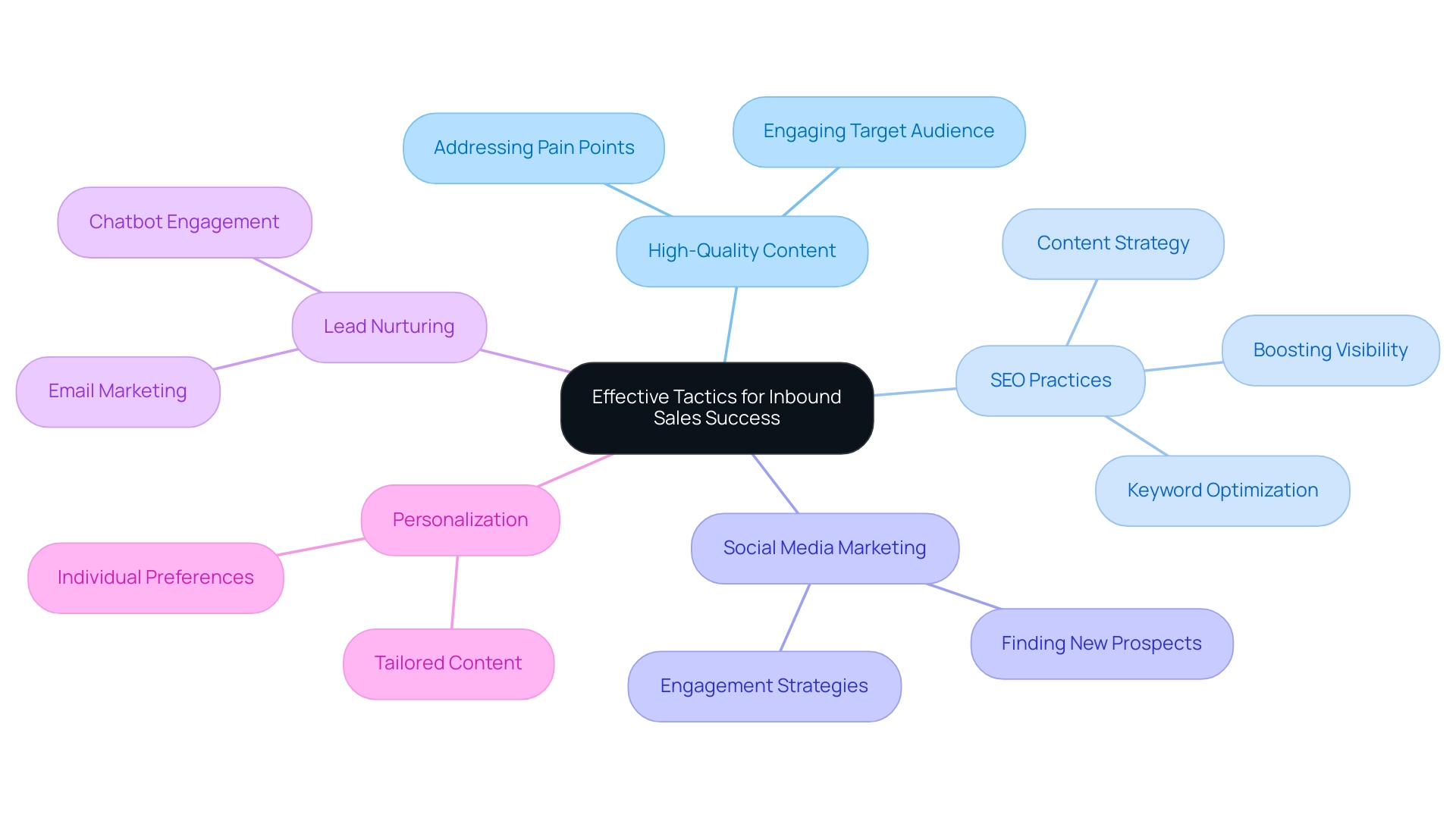
Optimize your inbound funnel with Dashly automation tools:
Optimizing outbound sales: Strategies and techniques
In 2025, enhancing the effectiveness of inbound versus outbound sales is crucial for businesses. We understand that navigating these transactions can be overwhelming. To tackle this, a multi-channel approach is essential — think phone calls, emails, and social media outreach working together. Personalization is key; marketing teams should conduct thorough research on prospects to craft tailored messages that truly resonate with individual needs.
The statistics from 2024 highlight a significant shift: the average B2B transaction process now takes 25% longer than it did five years ago. This change underscores the importance of timely follow-ups and consistent engagement. It’s a reminder that staying connected is more vital than ever.
Utilizing automation tools can simplify your outreach activities. By automating repetitive tasks, you can focus on improving interactions with clients. This not only allows your team to monitor engagement metrics but also enables them to refine their strategies based on real-time data. Additionally, training representatives in consultative selling methods can enhance their ability to build meaningful connections and meet client needs effectively, adapting to the evolving requirements of today’s purchasers.
Did you know that 81% of revenue teams are investing in AI, according to Salesforce? This investment can greatly improve data quality and personalize customer interactions, further strengthening the effectiveness of a multi-channel approach. Tools like Reply.io can also facilitate this outreach, combining various communication methods to better reach prospects on their preferred channels.
As the B2B commerce landscape continues to evolve, consider creating detailed comparison guides. These guides can engage decision-makers effectively on the topic of inbound versus outbound sales across multiple touchpoints. Remember, you’re not alone in this journey — taking these steps can make a significant difference in how you connect with your audience.
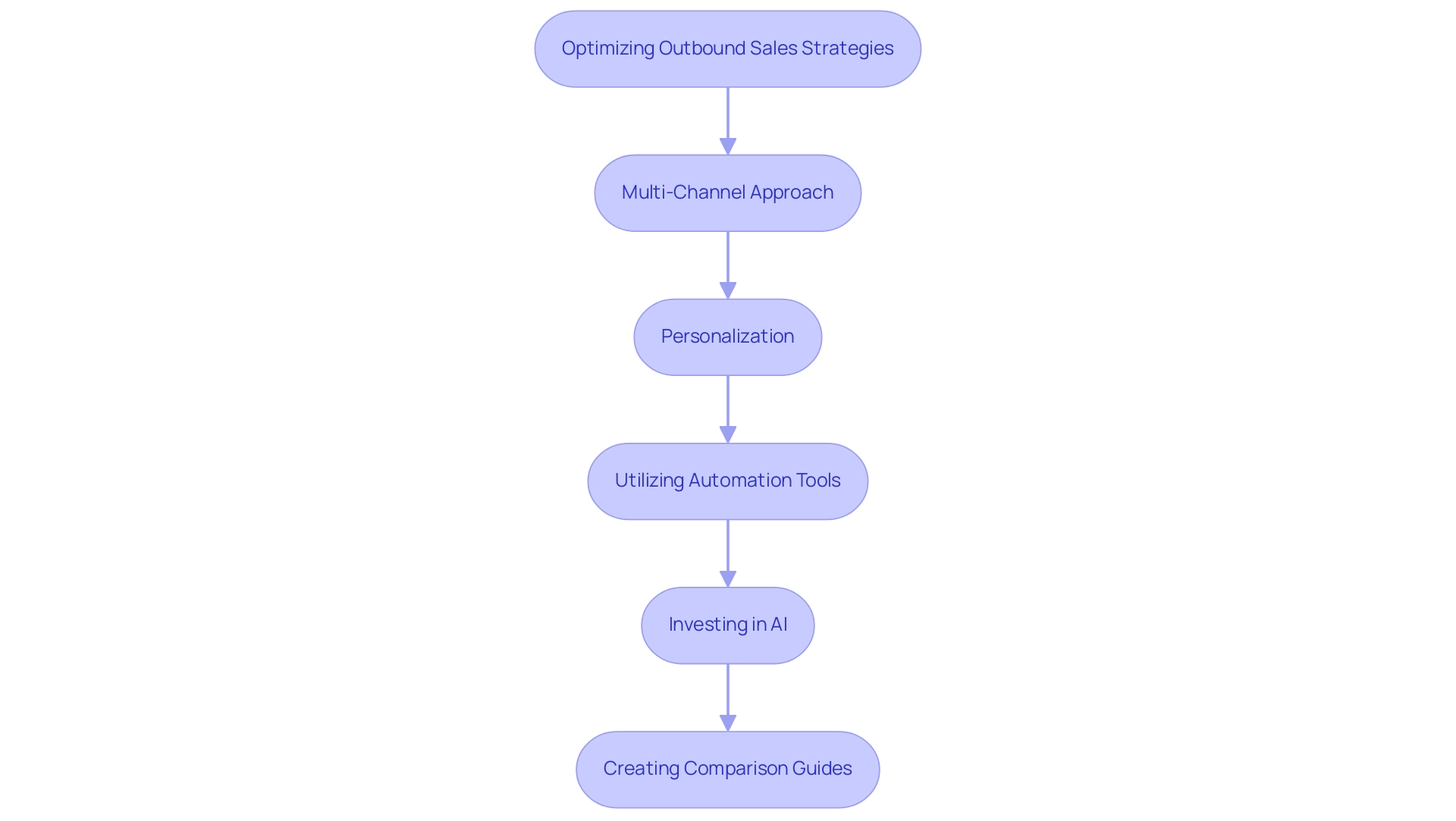
Integrating inbound and outbound sales for maximum impact
Navigating the world of sales can be overwhelming, especially when trying to balance inbound and outbound strategies. We understand that as a small business owner, you face daily challenges in lead generation and conversion rates. The good news? By combining these strategies, you can create a powerful synergy that not only improves your results but also aligns with real consumer behavior.
Imagine using insights from incoming interactions to enhance your outreach efforts. By focusing on data from inbound leads, you can refine your target lists for outbound campaigns, making your engagement more effective. This approach helps you connect with potential customers in a way that feels genuine and tailored to their needs.
It’s also essential to maintain a consistent brand tone across both inbound and outbound efforts. This consistency fosters a seamless user experience, which is crucial in today’s competitive landscape. With a staggering 75% of B2B purchasers relying on social media for their buying decisions, aligning your messaging can significantly boost your outreach effectiveness. Research shows that 81% of revenue teams are investing in AI to enhance data quality and create personalized customer interactions.
Take Dashly’s conversational marketing platform as an example. It equips businesses with the tools to automate lead capture around the clock, nurturing relationships while providing valuable data insights. This not only supports your external efforts but also empowers you to engage more meaningfully with your audience.
Looking ahead, the number of B2B digital purchasers in the MEA region is expected to soar to approximately 520 million by 2025. This makes adopting a hybrid approach to commerce increasingly vital. By blending inbound and outbound strategies, you can not only elevate your conversion rates but also create a more cohesive client experience. Remember, you’re not alone in this journey — embracing these strategies can lead to meaningful growth and connection with your customers.
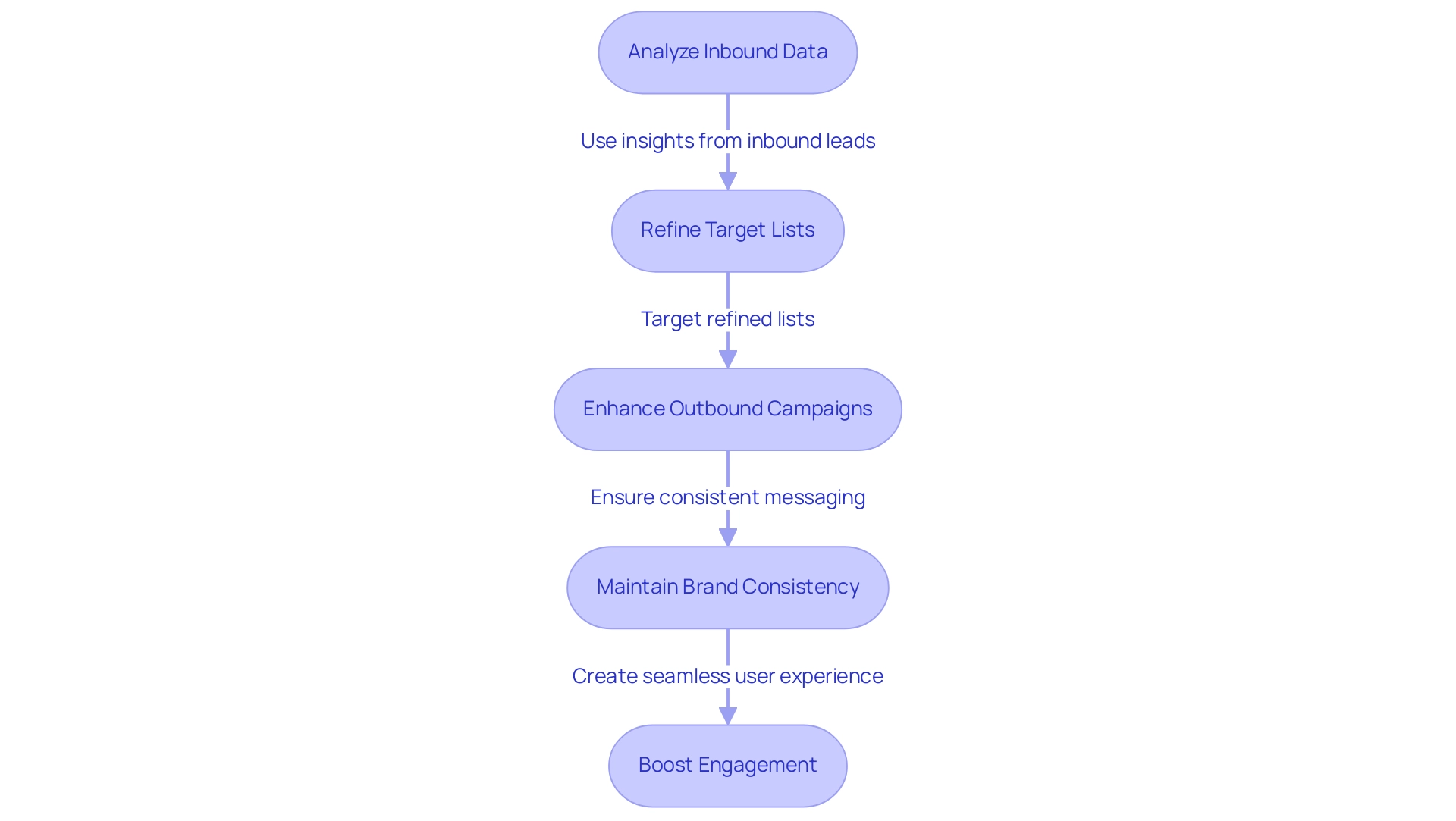
Leveraging technology in inbound and outbound sales
In today’s fast-paced world, technology plays a vital role in shaping how businesses approach sales, especially when comparing inbound and outbound strategies. We understand that navigating client interactions can be overwhelming. That’s where advanced CRM systems and marketing automation platforms like Dashly come in. They simplify the process, allowing you to monitor client interactions and get rid of routine tasks with marketing automation tools like triggered messages and chatbots. This means you can focus on what truly matters — growing your business — while efficiently nurturing leads and managing queries from various channels, all in one unified inbox.
With Dashly, you can forge meaningful connections with potential clients. Each touchpoint becomes informed and relevant, enhancing engagement and making clients feel valued. Plus, with self-service support options like a comprehensive knowledge base and an AI support bot that handles up to 40% of user queries, your team can focus on more complex issues than dealing with FAQs. In the realm of inbound sales versus outbound sales, these AI-driven tools are truly revolutionizing how businesses approach prospecting and outreach.
Imagine being able to reach out with a level of personalization that was once unattainable. With advanced analytics tools at your disposal, you can gain critical insights into campaign performance and service metrics. This allows you to monitor performance across all channels, set benchmarks for response times, and pinpoint areas for improvement. In a market where B2B sellers often have just 10 minutes to convince prospects during a cold call, this adaptability is crucial.
Dashly’s features each go with its own robust analytics. This way, you can track performance of each marketing campaign that you launch. This way you can set benchmarks for conversion rates, scale successful experiments, and get rid of those ideas that didn’t work. Here’s an example of a successful experiment of a Dashly client. After launching chatbots on their landing pages, online academy EdPro managed to generate $145k of extra revenue from their website.
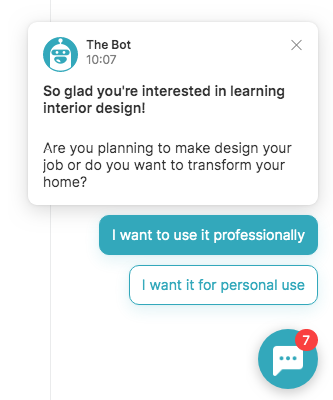
Ultimately, embracing technology not only enhances productivity but also enriches the overall experience, leading to deeper engagement and satisfaction. You’re not alone in this journey; the right tools can make all the difference. Why not explore how Dashly can support your business today?
Optimize your inbound funnel with Dashly automation tools:
Choosing the right sales strategy for your business
Choosing the right marketing approach can feel overwhelming, especially with so many factors at play — your audience, your product, and the resources you have on hand. By 2025, the global relationship management market is expected to soar from $64 billion to $146 billion, reflecting a robust growth rate of 13%. This surge underscores how vital effective marketing strategies are for building and nurturing customer relationships.
We understand that businesses must carefully consider their goals. Do you need the quick impact often provided by external marketing, or are you looking for the enduring benefits of inbound sales versus outbound sales strategies that prioritize relationship building? A hybrid marketing strategy is gaining traction, enabling companies to leverage the strengths of both methodologies. This approach not only meets the ever-evolving market demands but also caters to the varied preferences of your customers.
Monitoring your revenue metrics is crucial for evaluating performance and identifying areas for improvement. It’s about making data-informed decisions to find the most effective sales approach. As Qwilr points out, 47% of account executives have left their positions due to inadequate training or onboarding experiences. This statistic highlights the importance of equipping your sales teams with effective strategies. Additionally, a case study reveals that 45% of business buyers are skeptical about AI’s accuracy compared to human interactions, emphasizing the necessity for human oversight in AI engagements — especially relevant in hybrid selling scenarios.
Ultimately, your choice of sales approach should resonate with your company’s broader objectives and adapt to the ever-changing market landscape. This ensures you remain competitive and attuned to your clients’ needs. Dashly’s mission to automate routine tasks and enhance customer interactions exemplifies the practical solutions available to support these strategies. Remember, you’re not alone in navigating this complex landscape; there are tools and strategies that can help simplify the journey.
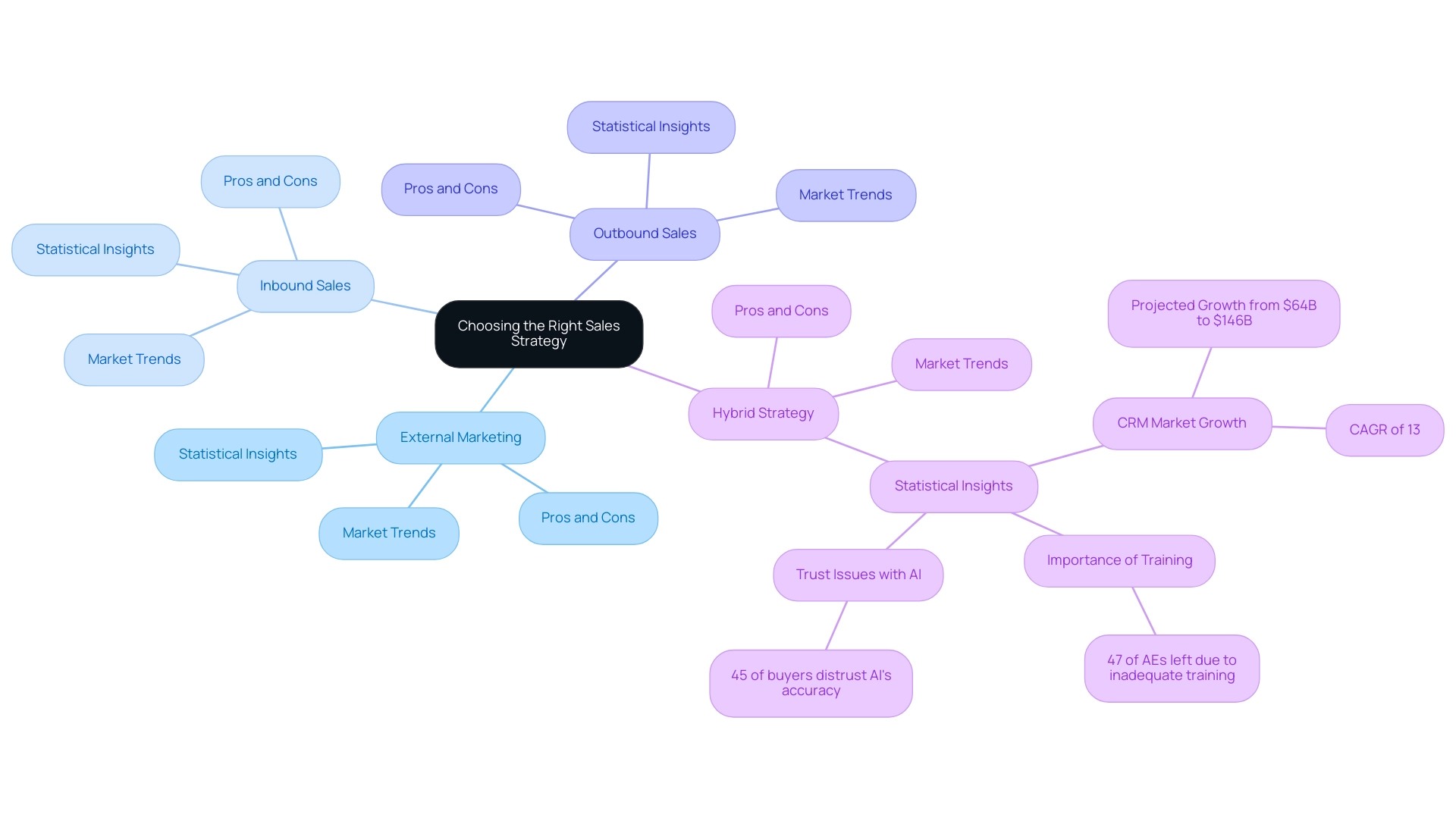
Conclusion
Understanding the distinctions between inbound and outbound sales strategies is essential for businesses like yours that aim to optimize marketing efforts. We get it — navigating these waters can be overwhelming. Inbound sales focus on attracting high-quality leads through valuable content and genuine customer engagement, while outbound sales rely on proactive outreach to generate leads directly. Both approaches come with unique advantages and challenges. Inbound methods often yield higher ROI over time, while outbound strategies can deliver quicker results, albeit at a higher cost per lead.
To achieve sales success, it’s crucial to employ effective tactics tailored to each strategy. Inbound sales require a commitment to creating relevant content, utilizing SEO, and leveraging social media to foster meaningful relationships. On the other hand, outbound sales can thrive with a multi-channel approach, incorporating personalized messaging and automation tools to enhance efficiency and engagement. Imagine the powerful synergy that can arise from integrating both strategies — allowing your business to refine outreach efforts based on insights gathered from customer interactions.
Leveraging technology plays a vital role in enhancing both inbound and outbound sales processes. Advanced CRM systems and marketing automation tools streamline customer engagement and facilitate data-driven decision-making. As the sales landscape continues to evolve, it’s important for businesses to remain adaptable and responsive to changing consumer behaviors and market demands.
Ultimately, choosing the right sales strategy is a critical decision that should align with your company’s goals and resources. Consider a hybrid approach, combining the strengths of both inbound and outbound methods. This can effectively cater to diverse customer preferences and help your business thrive in a competitive environment. By understanding and thoughtfully implementing these strategies, you can maximize your impact and drive sustainable growth in the ever-changing sales landscape. Remember, you’re not alone in this journey — there are practical solutions available to help you succeed.




